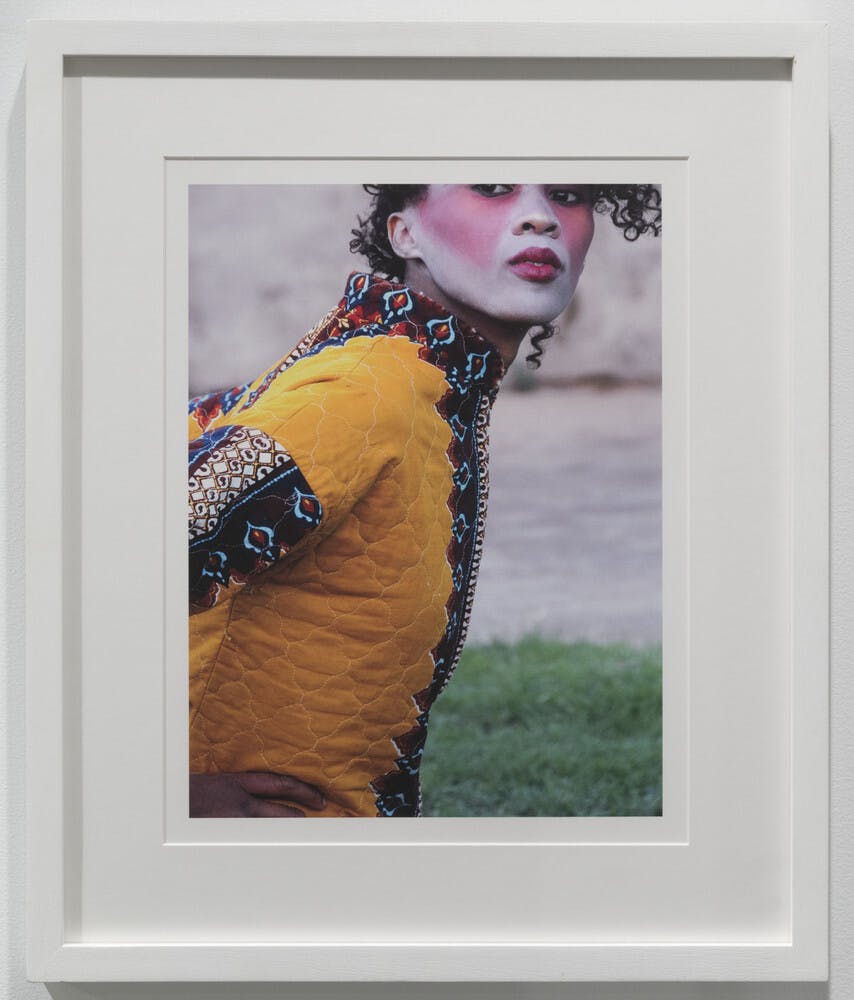Africhi, 2006

- Artist
Nontsikelelo Veleko
- Title
Africhi
- Date
2006
- Medium
Pigment ink on paper
- Dimensions
Image: 19 × 13 in. (48.3 × 33 cm) Frame: 23 3/4 × 20 × 1 5/8 in. (60.3 × 50.8 × 4.1 cm)
- Edition
Edition 1/10
- Credit line
The Studio Museum in Harlem; gift of Anne + Joel Ehrenkranz
- Object Number
2016.39
Nontsikelelo Veleko uses both street and fashion photography styles to explore self-representation through aesthetics and the role of clothing as a means of deliberately challenging assumptions of identity. She is specifically focused on the construction of Black identity through urban fashion styles in post-apartheid South Africa. A slight departure from her usual practice in street photography, Africhi is part of the larger series “Chinese/Japanese,” in which the artist (pictured) plays with her own identity by using makeup to further represent the ways people are marginalized and perceived as the “Other.”
Africhi, 2006

- Artist
Nontsikelelo Veleko
- Title
Africhi
- Date
2006
- Medium
Pigment ink on paper
- Dimensions
Image: 19 × 13 in. (48.3 × 33 cm) Frame: 23 3/4 × 20 × 1 5/8 in. (60.3 × 50.8 × 4.1 cm)
- Edition
Edition 1/10
- Credit line
The Studio Museum in Harlem; gift of Anne + Joel Ehrenkranz
- Object Number
2016.39
Nontsikelelo Veleko uses both street and fashion photography styles to explore self-representation through aesthetics and the role of clothing as a means of deliberately challenging assumptions of identity. She is specifically focused on the construction of Black identity through urban fashion styles in post-apartheid South Africa. A slight departure from her usual practice in street photography, Africhi is part of the larger series “Chinese/Japanese,” in which the artist (pictured) plays with her own identity by using makeup to further represent the ways people are marginalized and perceived as the “Other.”